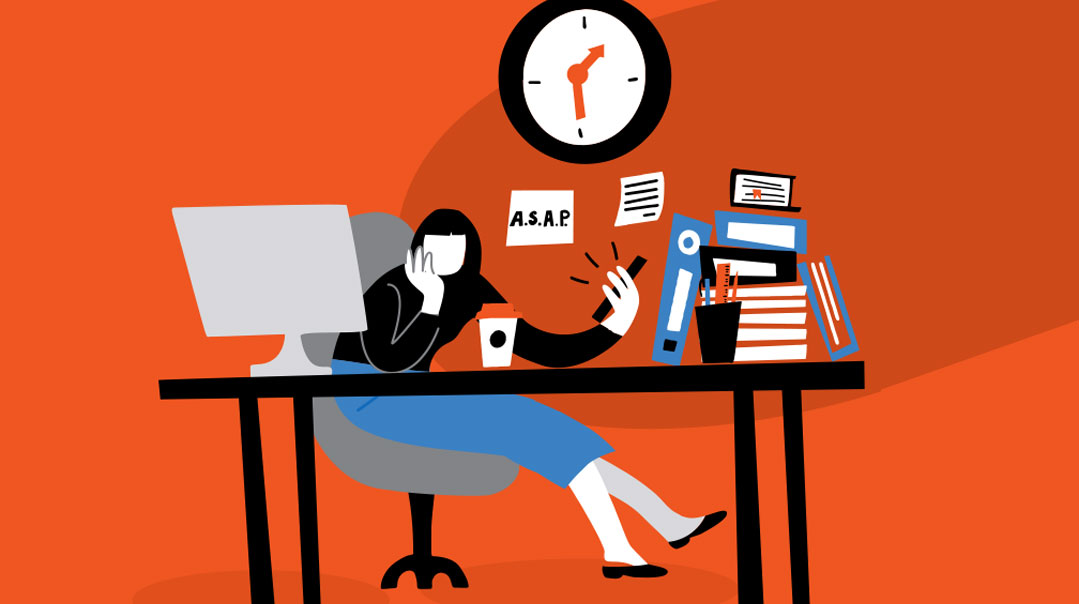Younger Mothers’ Tales


1 “Every pregnant woman has a special pregnancy glow.”
There is definitely a “pregnancy glow.” Pregnant women have greater blood volume which can make their skin look rosy, and their high hormone levels can cause the skin glands on their face to secrete more oil, which makes their skin shinier.
The myth lies with the word “every” woman. Some women have that glow; some definitely don’t. “Everyone is different,” says Dr. Clara Surowitz, MD, FACOG, an OBGYN in Lakewood. “Some ladies feel great during pregnancy, some feel miserable for the entire duration. It also depends on the trimester: Almost no one feels great in the first trimester, and by the last trimester, people are feeling tired and heavy… but sometimes the second trimester will offer some relief, even for those who are miserable.”
Dr. Danielle Quittner, an OBGYN from Melbourne, Australia, says that some pregnancies are extremely challenging, either physically, emotionally, or both. “A portion of women don’t glow — for good reason. Everyone’s heard of postpartum depression, but antenatal depression is a real thing, too. It’s important to speak to your doctor if you’re suffering from low moods,” Dr. Quittner says. “That said, I personally think every woman is at her most beautiful when she’s delivering her baby. Hashem’s presence is right above her, and even though she may be exhausted and in pain, you really see her glowing then.”
Did you know?
“Glowing” isn’t the only physical change in pregnancy. Some women go up a shoe size!
2 “Pregnant women are eating for two.”
Who hasn’t heard this one? There’s another whole person inside you, and now you’re eating for the both of you, so go ahead — take a double portion at every meal.
Don’t reach for the serving plate just yet. “I tell my patients they’re eating for one and a half,” says Dr. Surowitz. You’re definitely not eating for two adults! The fetus only needs an additional 300 calories per day, which is about one slice of pizza or two pieces of challah.
Eating “for two” is not only bad for the baby, it’s bad for the mother. If a woman doubles her food intake, she’s bound to exceed the recommended 25-35lb weight gain for a mom who began her pregnancy at a healthy weight. (For a woman who started her pregnancy overweight or underweight, the guidelines are different.)
According to the Centers for Disease Control and Prevention, nearly half of American women gain too much weight during their pregnancies. To prevent that, Dr. Surowitz recommends filling up with more protein, fruits, and veggies rather than carbs. “Carbs can cause excessive weight gain, which can make the baby too big.” C-sections happen regularly because of a baby’s large size.
Dr. Quittner recognizes that it can be hard to eat adequately what with the food aversions and cravings, excessive hunger, and nausea often experienced in pregnancy. Mothers tend to worry about how their food choices affect their babies. “I think it’s totally fine to enjoy your food, even to have treats here and there. The baby is remarkable at taking what it needs. Mom will likely feel less than great if she’s running on poor nutrition.” She says it can be helpful to eat smaller amounts more frequently than to have three large meals a day.
Did you know?
Pregnant with multiples? Eating for two (or more) is still not recommended. Even if you’re expecting triplets, “only” an extra 1350 extra calories are recommended in the third trimester.
3. “Don’t exercise!”
There are different variations of this myth floating around from, “Don’t exercise at all,” to “Don’t begin an exercise regimen while pregnant.” Dr. Surowitz says the truth is “quite the opposite,” and even someone who’s never exercised can still reap the benefits of light exercising. Nothing too strenuous, of course, but a gentle walk, swim, yoga, or Pilates can offer pregnant women wonderful health benefits, decrease their risk of gestational diabetes, and improve their mood and mental health.
Starting slowly and gently, carefully working themselves up is the way to do it. “Every type of exercise a pregnant woman does should be low impact so she doesn’t put herself at risk of separating the placenta from the uterine wall. No heavy aerobics, no jumping up and down… the better shape the mother is, the easier her delivery might be — partly because it helps the baby from gaining unnecessary weight,” Dr. Surowitz says.
Both doctors warned about good posture and taking proper safety precautions while exercising. Dr. Quittner agrees that exercise is “totally fine” during most of pregnancy, although she strongly advises against contact sports like basketball. “You don’t want anything bouncing hard at the uterus.” She also says a pregnant woman’s center of gravity might be a little off, so it’s important to be cautious.
Did you know? Beatie Deutsch, an Israeli marathon runner, completed a marathon in February 2017 in 4 hours and 8 minutes while seven months pregnant!
4. “Don’t sleep on your back.” (Or its first cousin, “Only sleep on your left side.”)
This one has got to be the most frustrating piece of advice for any expectant mother to hear — after months of tossing and turning as your body adjusts to its new shape, you finally find a comfortable sleeping position, only to be told, “Don’t sleep like that — it’s bad for the baby!”
“There really is something to it,” says Dr. Quittner. She and Dr. Surowitz explain that sleep positions only become an issue at about 20 weeks, when the uterus is bigger and heavier. Prior to that, position doesn’t really matter.
“When you lie flat, the heavy uterus sits on the vena cava, the biggest vein in the body, which carries blood back to your heart from your lower body and supplies blood to the baby,” Dr. Surowitz says. “The weight of the uterus could restrict the blood flow and cause it to get stuck in the mother’s legs. If her heart isn’t getting adequate blood flow, then the baby’s not getting enough oxygen.” There have been studies that showed that sleeping on your back during pregnancy has been associated with a higher risk of stillbirth.
So what’s an exhausted mother-to-be to do? “Sleeping on the left side is best because it’s the least compromising position,” says Dr. Quittner. “Although the right side is okay, as well. Lying flat on the stomach is safe too, although most mothers find it uncomfortable.”
For moms who love sleeping on their backs, Dr. Surowitz advises wedging a pillow under one side of their back. This way they can still lie in a comfortable sleeping position while their uterus leans slightly forward and the pressure’s off the vena cava.
Did you know? 78% of women report having a hard time sleeping during pregnancy — inbuilt practice for having a newborn!
5. “Cocoa butter prevents stretch marks.”
Expectant mothers who are miserable about the red and purple lines snaking around their growing belly or up their legs are more than willing to try anything to get rid of them. Word on the street is that rubbing cocoa butter on stretch marks can make them disappear.
Cocoa butter is a fat pressed out of cacao beans and used in a variety of beauty products. It’s supposed to be highly moisturizing, helping to soften dry skin and prevents and treats stretch marks. But does it really?
“There’s no hard evidence that it works,” says Dr. Quittner. “Getting stretch marks or not is really based on genetics, not on any outside factors.” For her patients with stretch marks, Dr. Quittner doesn’t recommend any treatment at all. “I don’t think cocoa butter will hurt you, but it does cost a lot and there are no guarantees. Still, if you think it works, there’s no harm in using it.”
Dr. Surowitz says cocoa butter may help the skin stay hydrated, but insists it won’t get rid of stretch marks. “If your mother had stretch marks, it’s likely you will too, and there’s nothing at all you can do about it. Stretch marks are all about the collagen, the elastic part of the skin — there’s nothing you can put on the skin that will really help.”
Some women report that applying cocoa butter too often actually backfires; it makes their skin more sensitive. Some even have allergic reactions to it.
Did you know? Varicose veins are not just a pregnancy issue… and not just a women’s issue. One British study claims that up to 56% of men suffer from varicose veins too.
6. “No flying in the last trimester.”
There are vague murmurings about air pressure or sitting for too long… and the biggie, getting stranded in some remote area when a pregnancy complication arises or labor unexpectedly starts. True?
“For most people, it’s not a concern,” says Dr. Surowitz. “We will advise against flying if there are complications, but for normal pregnancies, it’s fine to fly up until the beginning of the ninth month.”
Even then, it’s not so much about air pressure and swelling that’s concerning, it’s just practicalities. “Traveling in the ninth month might be risky in the sense that the patient may end up going into labor and delivering in an unfamiliar hospital, far from the doctor who had been taking care of her during her pregnancy. Driving long distances poses the same problem,” says Dr. Surowitz.
“Flying is totally fine, provided everything’s going okay,” agrees Dr. Quittner. “It’s not so much dangerous for mom or baby; the rule about flying is more an insurance thing from the airlines. They don’t want to be held responsible or be sued if something goes wrong.” No one wants to be the cause of an emergency landing!
Most Australians knows about flying long distances, and Dr. Quittner is no different. She warns that sitting in the same position for 20+ hours can increase the risk of blood clots in the legs, which can pose a danger if the clot travels to the lungs. “But sitting at home for 20 hours without getting up carries the exact same risk,” she says. A pregnant woman who travels long distances should be sure to get up and walk around the plane every couple of hours.
Did you know? Contrary to popular belief, airlines don’t have an unwritten rule that babies born on their planes will get free flights for life… although some babies (and their very lucky — depending on how you look at it! — mothers) have been awarded exactly that.
7. “Walking makes labor go faster.”
Labor hurts. So if someone is told to walk because it “makes labor go faster,” she will listen. We’re told about gravity, about helping the baby move down, getting into the birthing position. But is it true?
Dr. Quittner says it is. She believes that walking can aid the speed of labor because it encourages the baby to descend and rotate into the most favorable position for birth. Additionally, she says, “A lot of women find being upright and moving a good pain reliever.”
Dr. Surowitz isn’t sure. “I think for most people, the answer is no,” she says. “Walking makes you tired… but it doesn’t make your contractions stronger.” However, she adds, “When it comes to labor, everyone’s different. There are very few absolutes.”
Did you know? The amniotic sac ruptures prior to the onset of labor in only 1 in 10 mothers.
Dr. Surowitz says the biggest myth surrounding anything pregnancy related is the word “everyone.” “Part of the art of obstetrics is looking at each situation on its own; we can’t apply sweeping generalities to everyone,” she says. “Pregnant women are individuals.”
Dr. Quittner relates that her patients email her all the time with the most random questions, wanting to know if this or that is safe while they’re expecting. She doesn’t mind. “Everyone’s very well-meaning,” she says, “and everyone wants to do the best thing for her baby, but there’s a lot of anxiety. I think we often forget that pregnancy is a very natural thing; women have been doing it forever. This is what our bodies are literally made for.”
Important disclaimer: This article should not be taken as medical advice. Please consult your doctor with any questions.
(Originally featured in Family First, Issue 641)
Oops! We could not locate your form.












